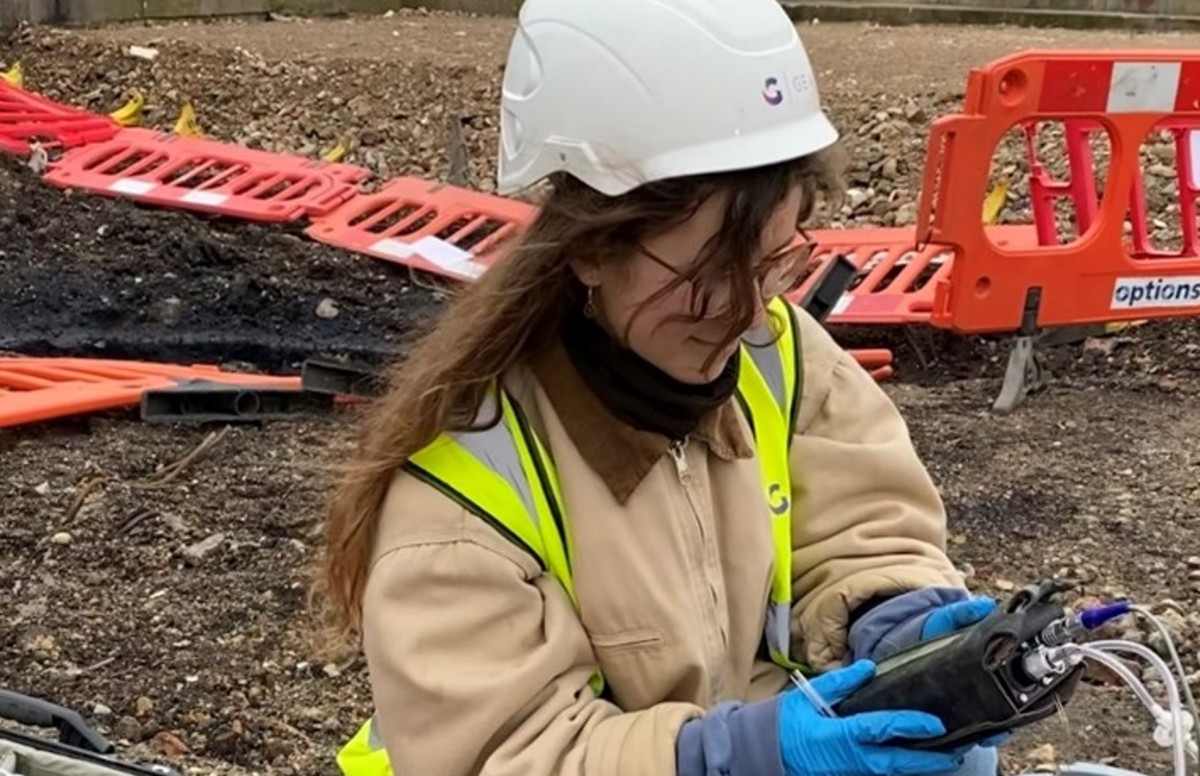Getting My Geotheta To Work
Getting My Geotheta To Work
Blog Article
The Best Guide To Geotheta
Table of ContentsHow Geotheta can Save You Time, Stress, and Money.See This Report on GeothetaHow Geotheta can Save You Time, Stress, and Money.A Biased View of Geotheta
They team up with civil designers, architectural engineers, designers, and various other professionals to incorporate geotechnical considerations right into the overall task style and building procedure. This needs effective team effort, control, and communication to make sure that the geotechnical aspects align with the task purposes and meet regulatory needs.Mining & Products Engineering: Concepts of boring, penetration prices, and variables impacting the choice of drilling approach. Characteristics of dynamites, shooting systems and blast patterns. Blowing up methods in surface area and below ground operations. Unique blowing up methods at excavation borders. Vibration and noise control. Mechanical and constant techniques to fragmentation, including longwall shearing and fullface boring.
Modelling of piece and particle dimension distributions; comminution as a transfer function. Comminution modern technology: squashing, grinding, dimension category. Integrated evaluation of fragmentation and comminution procedures. Supplied by: Mining & Materials Design.
The 7-Minute Rule for Geotheta
Bachelor's degree programs in civil, geotechnical, geological, and environmental engineering generally last 4 years and include basic education and learning courses in English, social science, and the humanities, along with training courses in sophisticated mathematics, architectural geology, and liquid mineralogy. (https://www.gaiaonline.com/profiles/geotheta/46779300/)
Geotechnical design involves the assessment of the dirt and rock problems at a specific site, and their effects for the advancement of that website. As most frameworks depend on the ground for support, it lacks surprise that a detailed understanding of the ground problems, and the viability of foundation systems, are crucial to the lasting stability and performance of the building or framework.
Specialising in the examination of geological developments and ground practices, geotechnical designers do clinical investigations and screening to understand the impact these geological developments might have on the layout and building and construction of building, civil and facilities projects. This expertise is important for the style and construction of buildings, roads, tunnels, dams, bridges, and water system and sewer systems.
The geotechnical group at Douglas Allies consistently talk to architects, layout engineers, developers, and builders to make recommendations on style and growth proposals to make certain that the constructed structures are appropriately made for the ground problems. As an example, the layout of footing systems needs to consider the weight of the structure, the capability of the ground to sustain that weight along with activity tolerances and efficient building and construction.
Geotheta Fundamentals Explained
This job is greatly streamlined by the usage of our Douglas Map geospatial platform that makes this information readily available in a very easy to utilize web internet browser user interface. A geotechnical engineer will route the boring of boreholes and examination pits to gather dirt and various other samples, and also examine surface area features and ground direct exposures to create a geotechnical design of the subsurface problems.
Depending upon the task type and ground conditions encountered, research laboratory screening may to name a few things examine stamina, compressibility, reactivity and/or leaks in the structure of dirt and rock examples. Hereafter data is collected and looked at, the outcomes are made use of for a geotechnical design of the website, which is normally offered as sections across the site.

A geotechnical examination naturally can only analyze the ground conditions at the places drilled or dug deep into. All-natural variations in dirt and rock problems can take place throughout a site and between test locations. It is as a result good practice that the geotechnical designer be kept throughout building of the task to offer on-site verification that the ground conditions experienced are regular with the assumptions and guidance given in the geotechnical investigation report.
The smart Trick of Geotheta That Nobody is Discussing
Geotechnical engineers use their comprehensive understanding of soil and rock to examine risk and fix problems on varied facilities projectsGeotechnical design is a specialist branch of civil design which takes a look at the behavior of earth materials and the application of soil and rock mechanics. Tailings Engineer. As a geotechnical engineer, you will examine the physical, mechanical and chemical residential or commercial properties of soil and rock in order to make structures, maintaining structures and earthworks
Geotechnical design is closely linked to and overlaps with, both engineering geology and ground engineering - https://hearthis.at/geotheta/set/geotheta/. It's feasible weblink to specialise in geotechnics or help a geotechnical company yet be known as an engineering geologist or a ground designer. As a geotechnical designer, you'll need to: build and keep relationships with customers and various other specialists associated with the site, throughout each projectmaintain safety requirements on website be conscious of price implications when you make recommendationsstudy geological maps and airborne pictures from a variety of sources and from different time periodsexamine building prepares to see exactly how possible they are based upon your understanding of the siteinvestigate dangers or geological risks for the sitesearch for ecologically delicate attributes, such as landfill beginning to create valid and expository ground modelsplan field investigationsdrill and analyse samples of bedrock, soil, groundwater and added products monitor various other professionals on sitesolve technical concerns as they occur, such as unanticipated structures at drill sitesmonitor conditions during and after building to see to it structures are secure in the short and long termadding data gathered on website to your preliminary researchcreating geotechnical calculations, drawings, and 2 or three-dimensional computer system models interpreting the datamaking referrals about the suggested use the website

Report this page